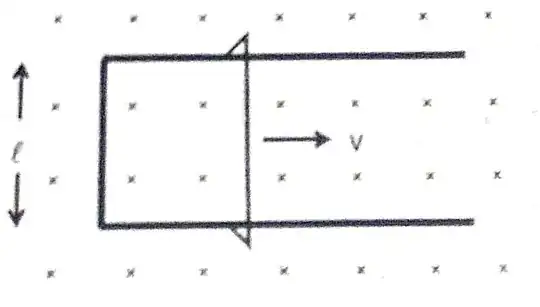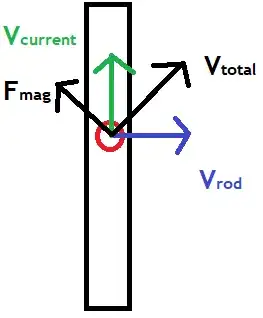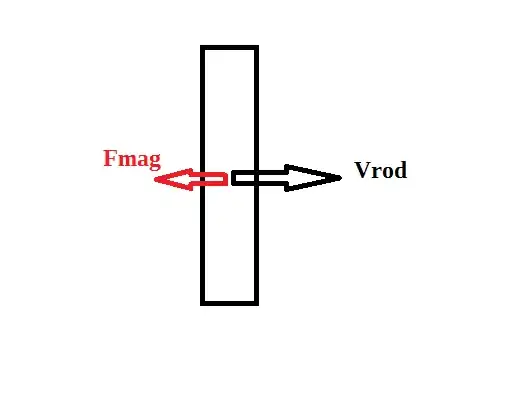This debate is a bit of "much ado about nothing". The basis is as follows. If you look at the Lorentz force we see $$\vec F = q \vec E + q \vec v \times \vec B$$ which leads immediately to $$P = \vec F \cdot \vec v = q\vec E \cdot \vec v + (q \vec v \times \vec B) \cdot \vec v = q \vec E \cdot \vec v$$ So from the Lorentz force it seems that the B field does no work.
Similarly, if we look at Poynting's theorem we see: $$\frac{\partial u}{\partial t} + \nabla \cdot \vec S + \vec J \cdot \vec E = 0$$ where $u$ is the energy density of the EM field and $\vec S$ is the flux of EM field energy from one location to another. The only term that involves matter is $\vec J \cdot \vec E$, which is energy that is leaving the EM field and going into the matter, hence it is the work done on matter. So from Poynting's theorem it also seems that the B field does no work.
However, the reason that this is "much ado about nothing" is that the E and B fields are not independent of one another. While you can write the work as $\vec E \cdot \vec J$ we also have Maxwell's equations which describe relationships between $\vec E$ and $\vec J$ and $\vec B$, especially via Faraday's law and Ampere's law. $\vec E \cdot \vec J$ is a function of $\vec B$.
Suppose, in particular, that we wish to investigate further the specific claim:
the loss in kinetic energy appears in the form of joule heating only
The problem is that the term $\vec E \cdot \vec J$ includes all of the work done on the conductor. That is, it includes both the joule heating and also any other form of work done on matter. For instance, in a battery it will include joule heating and also chemical work increasing the chemical potential. Similarly, in a conductor it will include joule heating and also mechanical work.
Let us make the assumption that in a conductor there is no other form of energy transfer besides joule heating and mechanical work. With that assumption, if the conductor is at rest then the mechanical work is 0 and $\vec E \cdot \vec J$ is indeed the Joule heating. However, in this case the conductor is not at rest. To determine the Joule heating we need to transform into the reference frame where the conductor is at rest.
Assuming that $v \ll c$ we have the following transformation equations where the primes represent quantities in the reference frame where the conductor is at rest:
$$\vec E' = \vec E + v \times \vec B$$
$$\vec J' = \vec J - \rho \vec v$$
Substituting those in we have:
$$\vec E \cdot \vec J = (\vec E' - \vec v \times \vec B) \cdot (\vec J' + \rho \vec v)$$
$$=\vec E' \cdot \vec J' + \vec E' \cdot \rho \vec v - (\vec v \times \vec B) \cdot \vec J' - (\vec v \times \vec B) \cdot \rho \vec v$$
$$=\vec E' \cdot \vec J' + \rho \vec v \cdot (\vec E+ \vec v \times \vec B) - (\vec J-\rho \vec v) \cdot (\vec v \times \vec B)$$
$$=\vec E' \cdot \vec J' + \rho \vec v \cdot \vec E - \vec J \cdot (\vec v \times \vec B)$$
So finally we end with
$$\vec E \cdot \vec J=\vec E' \cdot \vec J' + \vec v \cdot (\rho \vec E + \vec J \times \vec B)$$ which says that the total work $\vec E \cdot \vec J$ on a moving conductor is equal to the Joule heating $\vec E' \cdot \vec J'$ plus the mechanical work $\vec v \cdot (\rho \vec E + \vec J \times \vec B)$ where the mechanical work has the expected form which includes mechanical work done by the B field.
So while it is correct to say that $\vec E \cdot \vec J$ means that all of the work is due to the E field, it is also correct to say that $\vec E \cdot \vec J=\vec E' \cdot \vec J' + \vec v \cdot (\rho \vec E + \vec J \times \vec B)$ and therefore the B field does some mechanical work as expected. What is definitely incorrect to say is that the work is "in the form of joule heating only" because $\vec E \cdot \vec J$ is the total work and not only joule heating.


